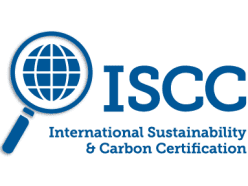Food waste and climate change: The unavoidable link
- Commercial, Local Authorities
- -
If we’re serious about climate change then we all need to stop wasting food.
Key Points
- Food waste is the second biggest single factor when it comes to the world’s carbon footprint.
- Reducing food waste at both production and distribution points should be addressed by ensuring businesses are doing what they can to pinpoint causes of food waste.
- Correct disposal of the food waste that does make its way through the system is imperative.
Why is food waste such an issue?
In the last few years over 75% of district, county, single-tier councils and combined authorities have declared a climate emergency. To tackle this ongoing effect on the environment, the UN has also put in place a goal to halve food waste by 2030.
It is a common misconception that most food waste is organic and will quickly decompose back into the soil when that’s just not the case. In the UK, we discard around a million tonnes of potatoes, bread and milk, which either ends up down the drain or going into landfills where it takes a considerable time to decompose.
Food waste in landfills creates a significant increase in GHG emissions because the organic matter is broken down by bacteria, which then produces methane. As a greenhouse gas, methane is more potent than carbon dioxide, in fact, it has a global warming potential of 21 times that of carbon dioxide, which means the link between food waste and climate change cannot be ignored.
Can a good waste management strategy improve your carbon footprint?
A good waste management strategy can be extremely beneficial in managing your carbon footprint. It helps not just with managing your existing food waste but also with reducing potential waste through mindful use.
It will give you a plan for dealing with your waste – helping you identify the steps where waste is happening, which will then allow you to fix it.
Food waste can be divided into three categories:
- Avoidable food waste: Food and drink that was edible at some point before disposal
- Possibly avoidable food waste: Food and drink that some people eat while others do not, or that can be eaten when prepared one way but not another
- Unavoidable food waste: Waste generated during food and drink preparation that is not, and has never been, edible
Food waste can sometimes be unavoidable; food prep by-products like egg shells and animal bones are inevitable and cannot be consumed. Any unavoidable food waste you generate can be sent for anaerobic digestion to repurpose it into something useful. This process can significantly reduce your carbon footprint, by not only converting your waste into renewable energy but cutting down the amount of emissions it would have otherwise generated by decomposing in a landfill.
Both of the first two categories can be managed and minimised. However, the category that benefits most from an effective waste management strategy is always avoidable food waste. Avoidable food waste refers to foods like leftovers, expired food items and bruised fruit and vegetables.
Once these items are identified, you can then begin taking precautions to reduce the amount of food wasted, by figuring out the why.
Carefully analysing why you may have avoidable food waste in the first place, is the best way to find a solution to the problem:
What else can we do with food waste to protect the environment?
If we want to reduce food waste at both production and distribution points, food waste management must not only be considered critically but actively made a priority within your business; which is why it’s necessary to implement best practices for the hospitality, education and commercial sectors.
Businesses are becoming more aware of the importance of understanding how to deliver effective food waste recycling and how beneficial it can be to your business and the environment long term. Almost all food waste is composted at composting facilities where it is transformed into nutrient-rich compost, which can later be used as soil enrichment in agriculture and landscaping to promote healthier plant growth. Occasionally, commercial food waste is disposed of by food recovery programmes, which rescue surplus food that is still edible and redistribute it to food banks, shelters or other charitable programs to help the less fortunate.
Your business can reduce costs by participating in commercial food waste collections. By diverting food waste from regular waste streams, you can reduce your disposal costs and as an added benefit reduce your environmental impact as well. There are many regional regulations and incentives in place to help encourage businesses to participate in commercial food waste collection. These incentives include tax benefits and reduced waste disposal fees and for compliance, certain businesses may be required to separate and properly dispose of their food waste.
The most sustainable way of recycling food waste is through the process of anaerobic digestion. Anaerobic digestion is a sustainable process of recycling large amounts of food and animal waste, which is backed by local, national and government-regulated bodies. Anaerobic digestion is an environmentally friendly process of creating a renewable form of energy from waste. Once the waste has been processed, what remains is a digestate or biofertiliser. They are made safe through pasteurisation, and then stored, ready to be applied to farmland. This high-nutrient fertiliser replaces the need for fossil-fuel-derived fertilisers.
What are the benefits of AD for local authorities?
- Sustainable: food waste recycling agreement.
- Environmental: reduced carbon footprint.
- Economical: cost-effective and increased revenue from reduced contamination rates.
Our Services
If you would like to know more about how we can help you reduce your emissions and food waste, our experienced team is on hand to help.



